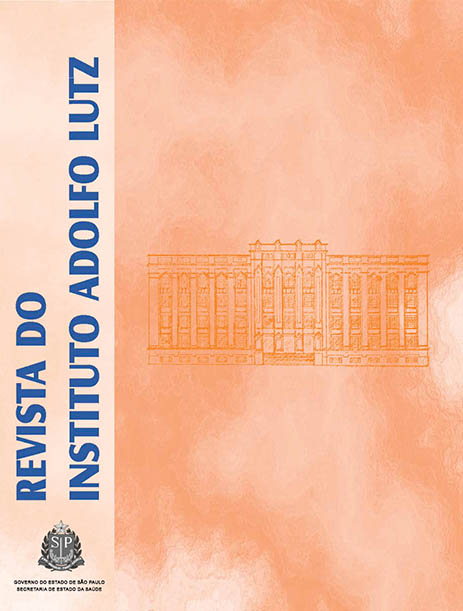Abstract
The present study assessed the microbiological quality of pre-cooked and refrigerated seafood marketed in Santa Catarina Island, Brazil. Forty-eight samples of crabs, mussels, shrimp and clams were purchased at fish markets in Santa Catarina Island from June to September 2008. Microbiological analysis were conducted for total counts of psychrotrophic, coliforms at 45 °C, Enterococcus spp., Escherichia coli, coagulase-positive staphylococci and Salmonella spp. detecting. All of analyzed samples showed absence of Salmonella spp. in 25g. Two (4.2%) samples exceeded the counting limits of coliforms at 45 °C (one of mussel and one of crab meat), and nine (18.75%) samples (five of clams and four of crab meat) exceeded the limits for coagulase-positive staphylococci. The psychrotrophic counts were high in all products analyzed. Positive correlations were found between coliforms counting at 45 °C and Escherichia coli, but no correlation was found between Enterococcus spp. and coliforms at 45 °C or Escherichia coli. This study evidenced that about 20% of the samples were not comply with the sanitary standards established by the Brazilian legislation.
References
1. Huss HH, Reilly A, Embarek PKB. Prevention and control of hazards in seafood. Food Control. 2000;11:149-56.
2. Feldhusen F. The role of seafood in bacterial foodborne diseases. Microbes Infect. 2000;2:1651–60.
3. Ababouch L. Potential of Listeria hazard in African fishery products and possible control measures. Int J Food Microbiol. 2000;62:211-5.
4. Miget R. Microbiology of crustacean processing: Shrimp, crawfish and prawns. In: Ward DR,Hackney CR, Editors. Microbiology of Marine Food Products. New York: Van Nostrand Reinhold; 1991.p.65–87.
5. Valdimarsson G, Einarsson H, Gudbjornsdottir B, Magnusson H. Microbiological quality of Icelandic cooked-peeled shrimp (Pandalus borealis). Int J Food Microbiol. 1998;45:157-61.
6. Alves CL, Carvalho FLN, Guerra CG, Araújo WMM. Comercialização de pescado no Distrito Federal: avaliação das condições. Hig aliment. 2002;16:41-9.
7. Ben AM. Effect of freezing and microbial growth on myoglobin derivates of beef. J Agric Food Chem. 1999;47:4093–9.
8. Jay JM. Microbiologia de Alimentos. 6a ed. Porto Alegre: Editora Artmed; 2005.
9. Huss HH. Control of indigenous pathogenic bacteria in seafood. Food Control. 1997;8:91-8.10.
10. Liston J. Microbial hazards of seafood consumption. Food Technol. 1990;44:56-62.
11. International Commission on Microbiological Specifications for Foods – ICMSF. Ecologia Microbiana de los Alimentos II, Productos Alimenticios. Zaragoza: Acribia Publisher; 1985.
12. Adams AM, Leja LL, Jinneman K, Beeh J. Anisakid parasites, Staphylococcus aureus and Bacillus cereus in sushi and sashimi from Seattle area restaurants. J Food Prot. 1994;57: 311–7.
13. Cardonha AMS, Casimiro, ARS, Vieira RHSF. Identificação de bactérias psicotróficas em caudas de lagosta, durante processo industrial com tripolifosfato de sódio. Hig aliment. 1994;8: 29-34.
14. Germano PML, Oliveira JCF, Germano MIS. O pescado como causa de toxinfecções bacterianas. Hig aliment. 1993;7: 40–5.
15. American Public Health Association - APHA. Compendium of methods for the microbiological examination of foods, 4th ed. Washington: USA; 2001.
16. Statistica, version 7.1 [Data Analysis Software System].Stat-Soft, Inc.; 2006. Disponível em: [http://www.statsoft.com].
17. Brasil. Ministério da Saúde. Resolução RDC nº 12, de 02 de janeiro de 2001. Aprova o Regulamento Técnico sobre Padrões Microbiológicos para Alimentos. Diário Oficial [da] Republica Federativa do Brasil. Brasília, DF, 10 jan. 2001. Seção 1, nº7-E. p.45-53.
18. Vieira DM, Naumann CRC, Ichikawa T, Cândido LMB. Microbiological characteristics of meat of siri benefited in Antonina (PR) before and after the adoption of good measures of practical. Scientia Agraria. 2006;7: 41-8.
19. Sombrio PS, Prudêncio ES, Amboni RDMC, Barreto PLM, Amante ER. Avaliação tecnológica, microbiológica, química e física de conservas de mexilhões (Perna perna) embaladas a vácuo. B Ceppa. 2008;26: 277-86.
20. Kumar R, Surendran PK, Thampuran N. Detection and characterization of virulence factors in lactose positive and lactose negative Salmonella serovars isolated from seafood. Food Control. 2009;20: 376–80.
21. Aveiro MV. Análise nutricional, microbiológica e histológica do berbigão Anomalocardia brasiliana da Reserva Extrativista Marinha do Pirajubaé (REMAPI), Florianópolis/SC [dissertação de Mestrado]. Florianópolis (SC): Universidade Federal de Santa Catarina; 2007.
22. Brito G, Cordeiro LN, Josino AS, Melo ML, Coutinho HDM. Avaliação da qualidade microbiológica de hambúrgueres e cachorros – quentes comercializados por vendedores ambulantes no município de Juazeiro do Norte, CE. Rev. Hig aliment. 2003;17: 90- 4.
23. Cordeiro D, Lopes TGG, Oetterer M, Porto E, Galvão JA. Qualidade do mexilhão Perna perna submetido ao processo combinado de cocção, congelamento e armazenamento. B Ceppa. 2007;25: 165-79.
24. Hagler AN, Mendonça-Hagler LC, Santos EA, Farage S, Silva-Filho JB, Schrank A. Microbial pollution indicators in brazilian tropical and subtropical marine surface waters. Sci Total Environ. 1986;58: 151-60.
25. Huss HH. Fresh fish: quality and quality changes. A training manual prepared for the FAO/DANIDA Training Programme on Fish Technology and Quality Control. Roma: Food and Agriculture Organization of the United Nations Publisher; 1988. (FAO Fisheries Series, 29).
26. Reddy NR, Paradis A, Ropman MG, Solomon HM, Rhodehamel EJ. Toxin development by Clostridium botulinum in modified atmosphere-packaged fresh tilapia fillets during storage. J Food Sci. 1996;61:632-5.
27. Galvão JA, Furlan EF, Sálan EO, Porto E, Oetterer M. Características físico-químicas e microbiológicas (Staphylococcus aureus e Bacillus cereus) da água e dos mexilhões cultivados na região de Ubatuba, SP. Ciênc agrotec. 2006;30: 1124-9.
28. Cunha Neto A, Silva CGM, Stamford TLM. Staphylococcus enterotoxigênicos em alimentos in natura e processados no estado de Pernambuco, Brasil. Ciênc Tecnol Aliment. 2002;22: 263-71.

This work is licensed under a Creative Commons Attribution 4.0 International License.
Copyright (c) 2011 Instituto Adolfo Lutz Journal
